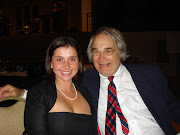

Charting the Application of T-Theory Market Analysis to Intra-day Charts of The Dow Jones Industrial Averages


It has been my experience over these many years that the Socratic method utilized in the inductive reasoning process produces far superior results in making stock market decisions. For this reason I am publishing my thoughts for review by my peers.

My involvement in securities markets began long before Technical Analysis entered the mainstream of security analysis so Ben Graham and 10-Q's guided my early years. I discovered the Over-the Counter options markets early on, well before the CBOE opened for business. I used a slide rule to calculate call option premiums and this was my first clue to the power of mathematics in security analysis. When I stumbled across the Black-Scholes formula, I was stumped and needed some help. I did suspect that in the land of the blind, the Black-Scholes formula would give sight to a trader among the blind. Over the years, I have studied both technical analysis and fundamental analysis with no real prejudice toward either. I found both paths of inductive reasoning to be essential in the pursuit of stock market profits.
No comments:
Post a Comment